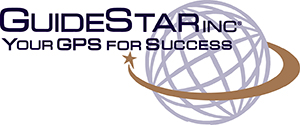What are you going to do to make your company better in 2013? Shooting for financial targets is hardly enough. Chasing financial goals is futile if the company lacks the human talent necessary to achieve such goals. In brief, making any company better depends on how leaders retain and leverage their human assets as a distinctive competitive advantage.
Our research has shown how entangled companies sustain distinctive competitive advantages in various industries by building unique and enviable cultures that stimulate creative thinking, constantly generate new ideas, motivate high performance and consistently delight customers.
Leaders of high-performing companies view their business as a system that requires the synchronizing of key subsystems. Great leaders know that the future success of any enterprise rests on the strength of their leadership subsystem, which includes the current and future direction of the enterprise and their leadership pipeline — how tomorrow’s leaders are being developed today.
The leadership pipeline is a lot more than merely planning for leadership succession. The pipeline is a set of integrated steps that begins with having the right people on board, extends to daily reinforcement of right behaviors and manifests itself in discretionary thinking and exceptional performance. If you want to do better in 2013 and beyond, assessing your leadership subsystem is a good place to start. The following questions spanning eight key areas can help you begin.
Core values. Does the company have a set of explicit core values? Were staff from all levels of the company involved in creating these values? Are the values easy to understand? Does the set of core values, taken together, convey the spirit of the company? Are the values conspicuously displayed throughout work areas to remind employees about the values the company holds most dear?
Code of conduct. Have employees created a code of conduct that exemplifies how core values appear in daily behaviors? Do employees hold themselves and others mutually accountable for right behaviors? Does the performance evaluation and management system recognize and reward employees for exemplifying core values?
Organizational Purpose. Does the vision for the company’s future inspire suppliers and key partners as well as employees? Does the company mission clearly state daily commitments in serving the stakeholders? When employees meet formally to conduct company business, do they review and reinforce the organizational purpose (values, vision, and mission)?
Leadership Philosophy. Does each employee understand the difference between leadership and management? Is every employee viewed as a leader who has influence upon others? Does each employee have a defined circle of influence through which he or she can affect change?
Trust and Caring. Is each employee trusted to act as a responsible adult? Have the company shed a 20th century command-and-control management approach for a 21st century trust-and-track leadership approach? Does each and every leader work on building relationships based on trusting and caring for others? Does the performance evaluation and management system recognize and reward leaders for relationship building? Are leaders who fail to meet this standard assessed, counseled, and coached to develop these skills? Are leaders who fail to respond to positive development efforts relieved from duties and encouraged to find employment elsewhere?
Learning and Growth. Are employees at all levels taught how to read company financial reports and to assess functional performance related to cost and expense management and revenue generation? Does each employee understand how his or her daily performance contributes to company goals and objectives? Does each employee have an individual development plan that identifies three strengths to be leveraged as well as three improvement areas for the next performance year?
Transparency. Are employees receiving all the necessary daily and weekly information from which to make decisions? Do employees receive routine, comprehensive reports of company operations they can use to improve service to their internal customers? Are employees engaged in decision-making at the lowest levels related to cost and expense management as well as revenue generation, if appropriate?
Accountability. Is each employee held accountable for meeting objectives? Does each employee provide a formal accounting of performance, such as weekly huddles (ala The Great Game of Business (1992) by Jack Stack and Bo Burlingham, New York: Currency-Doubleday)? Responsibility without accountability results in less than optimal performance!
Although answers to some of the above questions may not be easy, they provide a starting point for improving the leadership system within any company. The eight areas above serve as a framework through which leaders can work during the course of a year. Some areas are sequential, such as the code of conduct following establishment of core values, while others can run concurrently, such as learning and growth along with transparency. The keys to success are doing honest assessments, confronting the brutal facts, and pursuing solutions for each response that lacks a definitive “Yes!”.
By Dr. Ray Benedetto and Tom Walter
